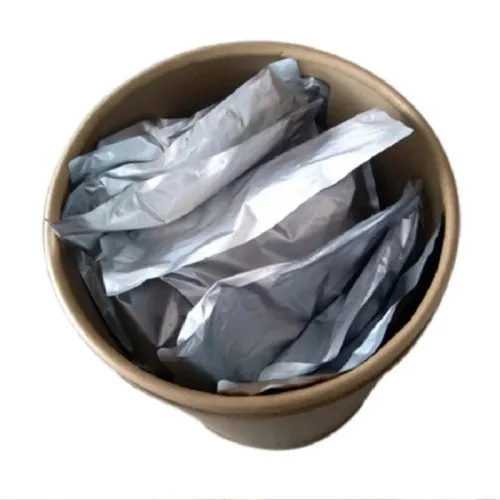Warning: Undefined array key "title" in /home/www/wwwroot/HTML/www.exportstart.com/wp-content/themes/1198/header.php on line 6
Warning: Undefined array key "file" in /home/www/wwwroot/HTML/www.exportstart.com/wp-content/themes/1198/header.php on line 7
Warning: Undefined array key "title" in /home/www/wwwroot/HTML/www.exportstart.com/wp-content/themes/1198/header.php on line 7
Warning: Undefined array key "title" in /home/www/wwwroot/HTML/www.exportstart.com/wp-content/themes/1198/header.php on line 7
- Afrikaans
- Albanian
- Amharic
- Arabic
- Armenian
- Azerbaijani
- Basque
- Belarusian
- Bengali
- Bosnian
- Bulgarian
- Catalan
- Cebuano
- China
- China (Taiwan)
- Corsican
- Croatian
- Czech
- Danish
- Dutch
- English
- Esperanto
- Estonian
- Finnish
- French
- Frisian
- Galician
- Georgian
- German
- Greek
- Gujarati
- Haitian Creole
- hausa
- hawaiian
- Hebrew
- Hindi
- Miao
- Hungarian
- Icelandic
- igbo
- Indonesian
- irish
- Italian
- Japanese
- Javanese
- Kannada
- kazakh
- Khmer
- Rwandese
- Korean
- Kurdish
- Kyrgyz
- Lao
- Latin
- Latvian
- Lithuanian
- Luxembourgish
- Macedonian
- Malgashi
- Malay
- Malayalam
- Maltese
- Maori
- Marathi
- Mongolian
- Myanmar
- Nepali
- Norwegian
- Norwegian
- Occitan
- Pashto
- Persian
- Polish
- Portuguese
- Punjabi
- Romanian
- Russian
- Samoan
- Scottish Gaelic
- Serbian
- Sesotho
- Shona
- Sindhi
- Sinhala
- Slovak
- Slovenian
- Somali
- Spanish
- Sundanese
- Swahili
- Swedish
- Tagalog
- Tajik
- Tamil
- Tatar
- Telugu
- Thai
- Turkish
- Turkmen
- Ukrainian
- Urdu
- Uighur
- Uzbek
- Vietnamese
- Welsh
- Bantu
- Yiddish
- Yoruba
- Zulu
ліп . 30, 2024 05:15 Back to list
Understanding the Aspartame Production Process and Its Impact on Food Industry Trends
The Aspartame Production Process A Comprehensive Overview
Aspartame, an artificial sweetener, has become a staple in low-calorie and sugar-free food and beverage products. Initially discovered in 1965, aspartame is approximately 200 times sweeter than sucrose (table sugar), making it a favored choice for those seeking to reduce their caloric intake. The production of aspartame involves several intricate steps, from initial synthesis to final refinement, ensuring a high-quality product that meets strict safety standards.
Step 1 Raw Material Gathering
The production of aspartame begins with the gathering of its raw materials two amino acids known as phenylalanine and aspartic acid. Phenylalanine is an essential amino acid found in various protein sources, such as meat, fish, eggs, dairy, nuts, and beans. Aspartic acid, on the other hand, is a non-essential amino acid that can be synthesized in the body and is available from various dietary sources. These amino acids are the critical building blocks for aspartame.
Step 2 Chemical Synthesis
Once the raw materials are procured, the next stage is the chemical synthesis of aspartame. This process is typically carried out through a reaction known as peptide synthesis. In this step, phenylalanine and aspartic acid undergo a series of chemical reactions to form a dipeptide. This reaction is facilitated by a specific enzyme or through chemical catalysts, ensuring that the amino acids bond correctly to produce the desired compound.
An important aspect of this synthesis is the protection and selective activation of functional groups on the amino acids, which allows for controlled bonding during the reaction. The result of this stage is an intermediate product known as aspartyl phenylalanine methyl ester.
Step 3 Methylation
aspartame process

The next critical step is the methylation of the intermediate product. This involves adding a methyl group (–CH3) to the molecule to enhance its sweetness and stability. Methylation usually employs chemical reagents like methyl iodide or dimethyl sulfate, which react with the aspartyl phenylalanine to yield aspartame. This reaction is delicate and requires precise control of conditions, such as temperature and pH, to ensure a high yield and minimize by-products.
Step 4 Purification
After synthesis, the crude aspartame is subjected to a purification process to remove any residual reactants, by-products, and unreacted starting materials. This step typically involves crystallization and filtration, which separate the desired aspartame from impurities. High-performance liquid chromatography (HPLC) may also be employed for more thorough purification, ensuring that the final product meets the stringent purity specifications set by regulatory authorities.
Step 5 Quality Control
Quality control is a vital aspect of the aspartame production process. Samples of the purified aspartame undergo rigorous testing to confirm their purity and safety. These tests include analysis of the chemical composition, sweetness intensity, and potential contaminants. Regulatory bodies such as the FDA (Food and Drug Administration) and EFSA (European Food Safety Authority) provide guidelines and conduct assessments to ensure that aspartame is safe for consumption before it reaches the market.
Conclusion
The aspartame production process illustrates the intricate interplay between chemistry and food science, merging natural amino acids into a highly sought-after artificial sweetener. With its widespread use in the food industry, understanding this process not only highlights the complexity of creating sweeteners like aspartame but also underscores the importance of safety and quality in food production. As consumer demand for low-calorie alternatives continues to grow, the production of aspartame remains a key area of interest in both scientific research and commercial development.
Latest news
-
Certifications for Vegetarian and Xanthan Gum Vegetarian
NewsJun.17,2025
-
Sustainability Trends Reshaping the SLES N70 Market
NewsJun.17,2025
-
Propylene Glycol Use in Vaccines: Balancing Function and Perception
NewsJun.17,2025
-
Petroleum Jelly in Skincare: Balancing Benefits and Backlash
NewsJun.17,2025
-
Energy Price Volatility and Ripple Effect on Caprolactam Markets
NewsJun.17,2025
-
Spectroscopic Techniques for Adipic Acid Molecular Weight
NewsJun.17,2025

